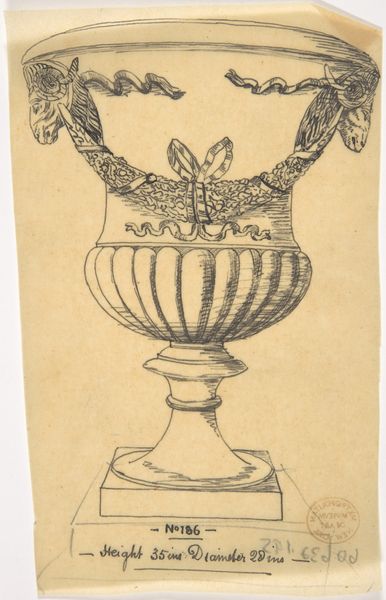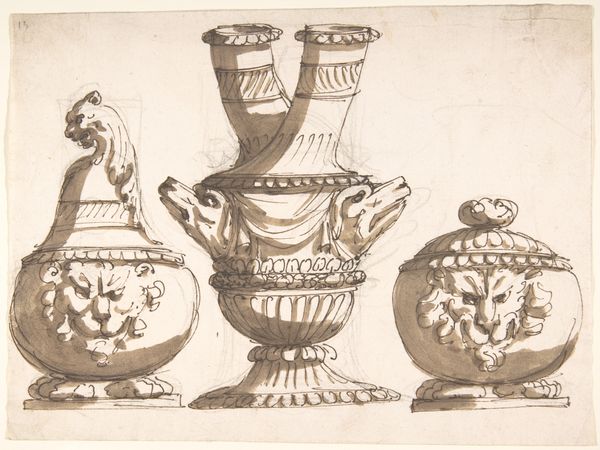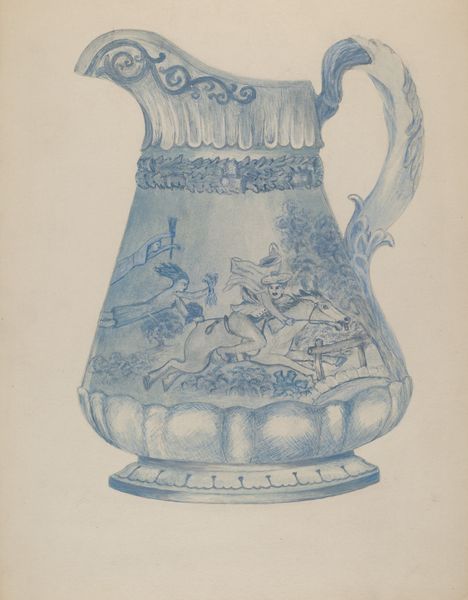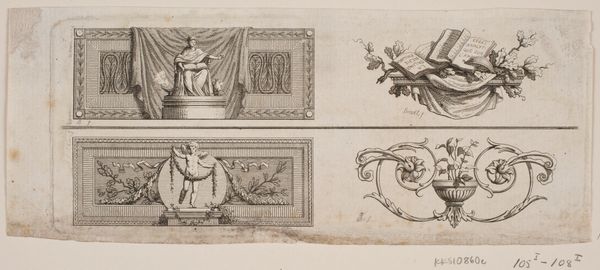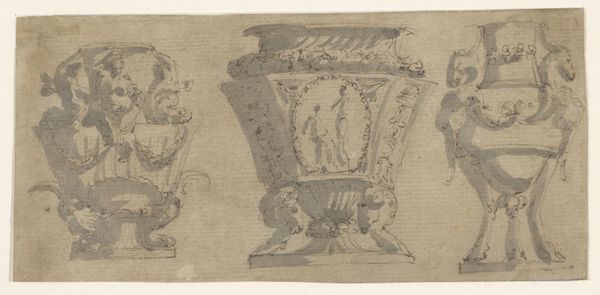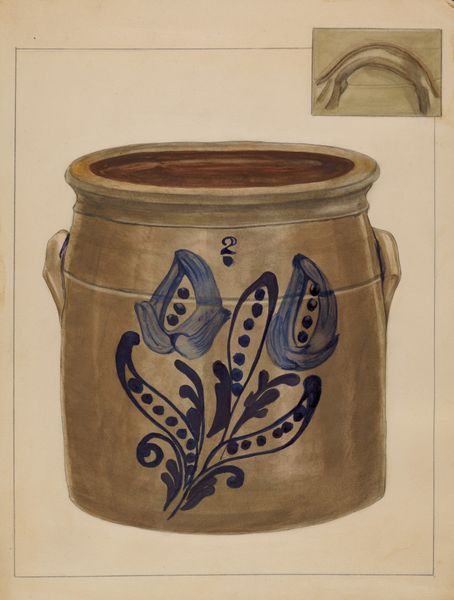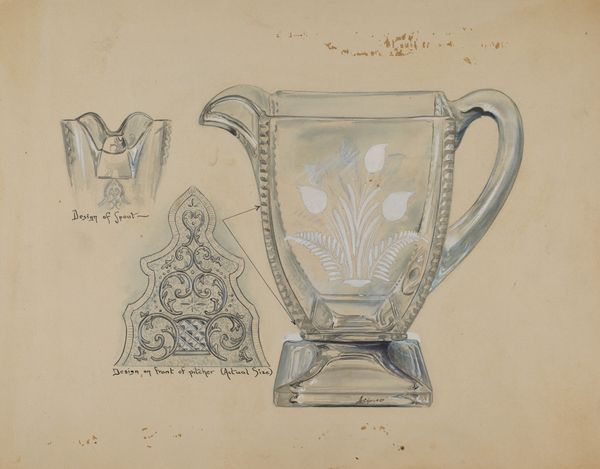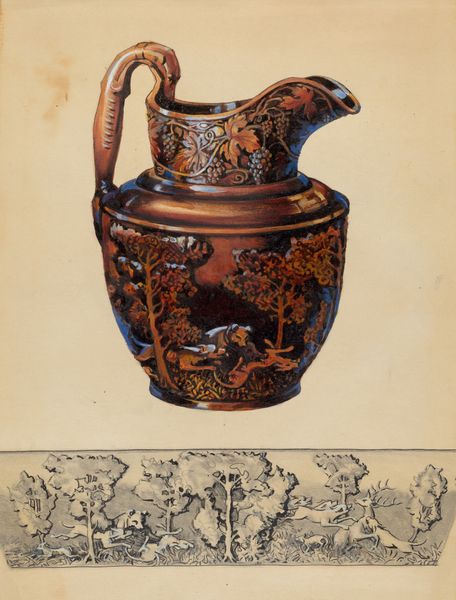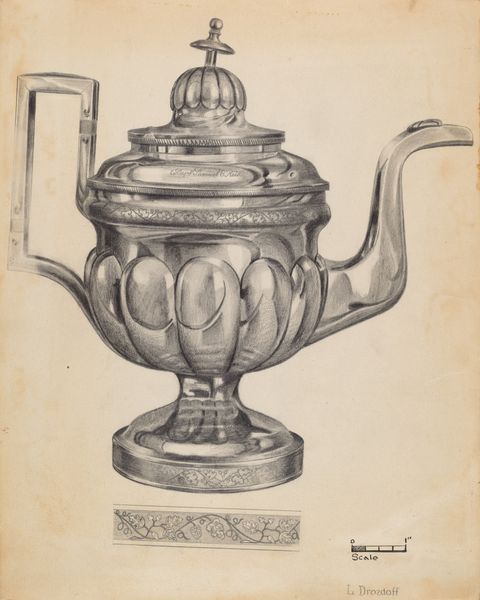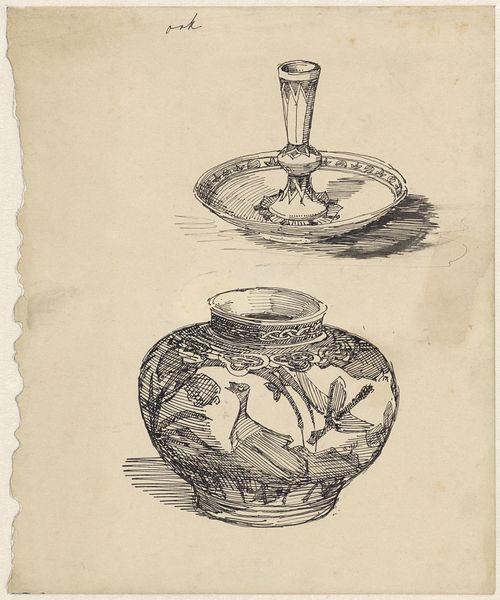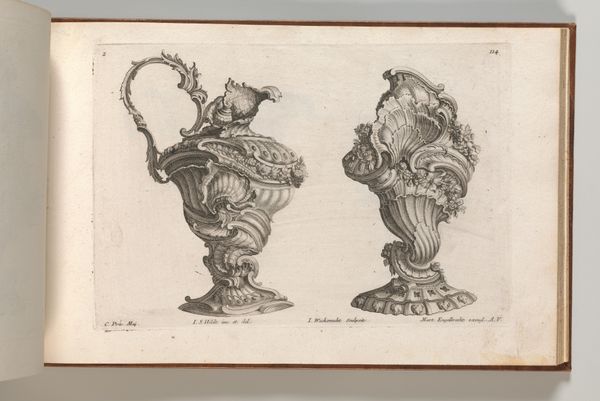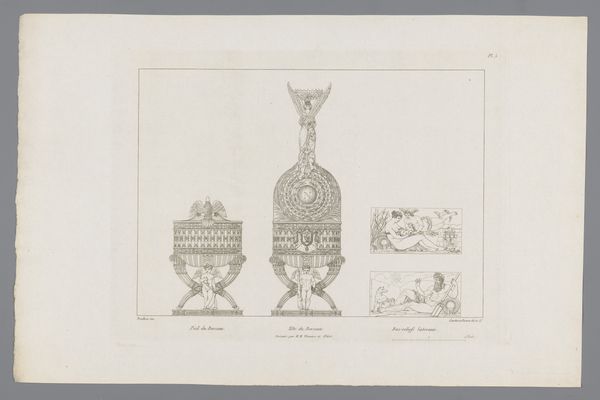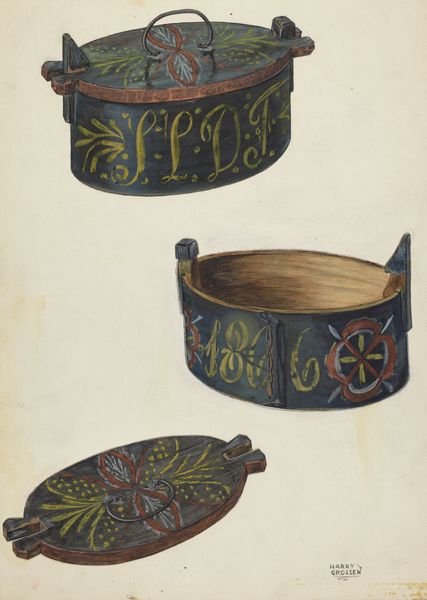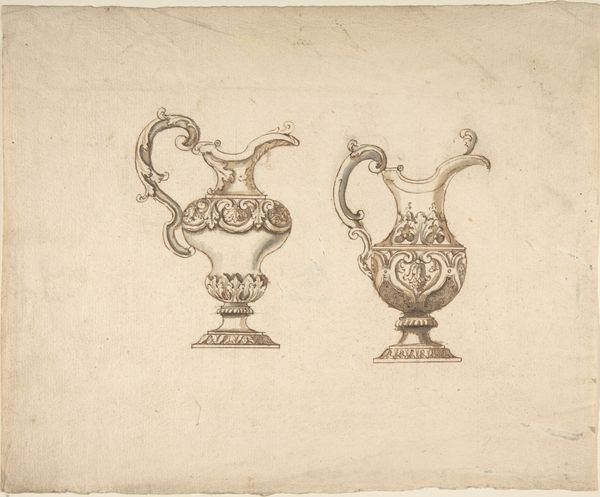
drawing, coloured-pencil, watercolor
#
drawing
#
coloured-pencil
#
watercolor
#
coloured pencil
#
watercolour illustration
Dimensions: overall: 37.9 x 50.8 cm (14 15/16 x 20 in.)
Copyright: National Gallery of Art: CC0 1.0
Editor: Here we have Michael Lauretano's "Bandbox Paper," circa 1939, a drawing in colored pencil and watercolor. I find the imagery intriguing, especially how the design seems to contrast between the raw, almost muted sketch on the left versus the polished version on the right. How do you interpret that contrast, and what does it tell us? Curator: The presence of two states really heightens the political undercurrent, doesn't it? One is the sketch, raw, muted, immediate— perhaps that suggests a certain lived reality. And its counterpoint, the more formal version that pulls toward a kind of constructed perfection and maybe hints at a different narrative altogether. Seeing this dichotomy of draft versus final is important when considering who this design may have served and to what ends. Considering the timeframe, too – 1939, the precipice of global conflict – that idealized, nationalistic imagery carries so much loaded weight. Do you find a similar push-pull tension within it? Editor: Yes, definitely. I see the eagle as a strong symbol here and then also the shape of the urn… Curator: Exactly. So what meanings might these traditional, almost classical forms hold when rendered through this visual dialectic? How do these visuals of statehood then get reproduced on something as simple as bandbox paper? To take an accessible medium and decorate it in patriotic symbols speaks to the power and pervasiveness of the United States' political image, at that time, both domestically and abroad. And think about how those power dynamics impact viewers now, across diverse backgrounds and experiences. Editor: It's fascinating to think about the layered meanings and how those resonate, even today. It encourages us to analyze not just the object but its socio-political life. Curator: Precisely! By analyzing seemingly simple design choices, we unpack wider conversations about national identity, power, and even propaganda and advertising. It serves as a powerful reminder that visual culture is a language in constant dialogue with our lived realities.
Comments
No comments
Be the first to comment and join the conversation on the ultimate creative platform.
